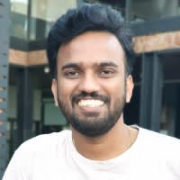We specialize in all Palo Alto modules, including visibility, compliance, governance, threat detection, data security, and hub security. Our comprehensive suite of services covers all aspects of these modules. We leverage the SaaS security product for advanced threat detection, and for all-encompassing monitoring, we utilize Cortex XDR from Palo Alto.
Many customers store sensitive data in on-premises data centers and require robust security measures. Prisma Access licenses can protect internal networks, but some customers prefer avoiding internet exposure. To address this, we offer gateways that create a secure environment for internet access. With the rise of remote work, we provide VPN connections, such as GlobalProtect, for secure access to both internal and external resources. Customers can deploy multiple gateways in different regions to meet their needs. Traffic flow typically involves a VPN connection to a gateway, followed by routing through internal service connections and potentially a data center firewall before reaching the desired resource. For external access, traffic is routed directly to the internet through the VPN.
Prisma Cloud offers comprehensive security across multi and hybrid cloud environments. For instance, our ADEM tool, considered industry-leading, requires installation on user machines to enable continuous monitoring of all ADEM-equipped users. This includes detecting anomalous activity outside the corporate network and tracking user online time, providing valuable insights into network usage.
Security automation and EA Ops significantly reduce manual configuration and management tasks compared to previous methods, saving valuable time. Now, we only need to configure a few minor details rather than handling everything. For instance, with service connections and gateways, we don't have to manage multiple VPN gateways; Palo Alto is managed on the backend. Our primary responsibility will be monitoring after initial tunnel creation. We've preconfigured connections to on-premises firewalls, whether third-party or Palo Alto, eliminating manual configuration. Automation is in place, and we'll only need to purchase licenses. The autonomous system further enhances automation for all processes.
Intune security automation has significantly reduced our costs, making us more financially efficient making us more financially efficient. Automation is now highly valued as it eliminates the need for engineers to configure and manage systems manually. With AI-driven automation, we can effectively monitor configurations through a dashboard, providing a complete overview. This automation simplifies tasks like creating BGP connections, which previously required complex CLI commands. Prisma Access Palo Alto's GUI interface automates tenant creation with minimal input. Integrating Prisma MDM and Palo Alto device deployment further streamlines the process, reducing manual intervention. Overall, this automation saves money and frees up engineer resources by eliminating time-consuming configuration tasks.
Palo Alto Networks is a global leader in cybersecurity, providing top-tier protection to its customer base of over 90,000. Traditionally, customers relied on on-premise hardware firewalls, but the shift towards cloud-based solutions has driven a demand for more flexible and cost-effective security options. In response, Palo Alto Networks offers cloud security solutions that leverage its existing global device infrastructure. Customers only need to purchase licenses to activate cloud security features, tailoring protection to their specific needs for internal, external, or network environments. For customers seeking complete independence, Palo Alto Networks also provides interconnect licenses that eliminate the need for a service connection.
Customers do not directly purchase Palo Alto products or deploy them into production. Our professional engineers provide a lab environment for customers to test any desired Palo Alto services, from essential Prisma Access to advanced cybersecurity solutions like SaaS security and Cortex XDR. Once customers are satisfied with the lab environment, they can deploy the chosen products into production. If they encounter any issues during deployment or operation, the support team promptly addresses them.
I have resolved numerous customer issues, closing over 400 or 500 cases globally. While many cases can be resolved within a week, some complex issues may take up to a month. Palo Alto Networks aims to provide timely support for all customer issues, regardless of severity. When a customer encounters a VPN connection problem, they can create a case with varying priority levels. Critical cases are assigned to engineers immediately, with hourly updates provided to the customer. If the issue persists, the case is escalated to senior resources. Prisma, a relatively new platform, is constantly being monitored for bugs. Any issues identified are addressed promptly and communicated to customers. Our goal is to deliver exceptional support services.
Prisma Cloud offers complete visibility across our entire environment, from end users to the data center. We'll have full control and oversight within a single unified portal, eliminating the need to juggle multiple platforms as often required by other solutions. Prisma Cloud provides dedicated applications for various functions, such as SaaS security, threat and vulnerability management, cloud identity engine, and log analysis. These applications work seamlessly together, automatically connecting through APIs once deployed and licensed. For configuration management, the Strata Cloud Manager handles Prisma Access and Prisma SD-WAN. This centralized approach allows us to efficiently manage multiple aspects of our security infrastructure within a single platform.
Prisma Cloud offers SaaS security and data loss prevention as separate features requiring additional licensing. Both can be managed through a single portal. For threat prevention, they provide Cortex XDR, a recent cybersecurity offering from Palo Alto. When combined, we have a single tool to protect all of our cloud resources and applications.
Prisma Cloud helps reduce the number of runtime alerts. Users will only receive live alerts generated when Prisma detects an issue within the environment. For instance, if Prisma Access observes an attack, it will generate a live alert visible in the startup cloud manager's dashboard.
Prisma Cloud effectively reduces the overall number of alerts by prioritizing them into categories: critical, high, medium, low, and informational. Less critical warnings are consolidated into the informational category, minimizing alert fatigue. Critical alerts persist until resolved, and recurring issues can be configured to trigger email notifications for proactive monitoring, ensuring timely attention even when engineers are unavailable.
Prisma Cloud offers significant cost savings for customers. Previously, customers managed multiple firewalls, including internal and external devices. With Prisma Access, this complex management is eliminated, as Palo Alto handles firewall management. Customers configure and purchase a license to access gateways for end-user connections. This eliminates the need to purchase expensive individual firewalls, which can cost billions. While customers retain visibility through a provided portal to monitor traffic, the primary benefit is the streamlined management and cost reduction achieved through Prisma Cloud.
Visibility and control are valuable features. Customers desire complete oversight to monitor resource access, both internal and external, and verify user activity. ADEM, a purchasable license, enhances network visibility by tracking traffic patterns and identifying potential threats through a dashboard. Our Strata Cloud Manager platform unifies Prisma access and cloud management, while also accommodating next-generation firewall administration. The dashboard provides in-depth visibility into threats and vulnerabilities.
Prisma Cloud's most valuable feature is its user identification capabilities. By integrating with Active Directory or LDAP servers, it efficiently manages user access to cloud resources. Previously, determining user access required multiple hops through internal resources, consuming significant bandwidth. Prisma Cloud's Cloud Identity Engine directly connects to identity providers, streamlining user authentication and authorization. This improves performance and security by eliminating the need to constantly query Active Directory. Additionally, Prisma Cloud offers full visibility into network threats and vulnerabilities through a unified dashboard, reducing the need for multiple tools and licenses. This centralized approach enhances threat detection, response, and overall security posture.
The speed at which Palo Alto resolves bugs should be improved to prevent customers from experiencing issues while waiting for resolutions.
Palo Alto Prisma Cloud is relatively new, with only three years of history. While the documentation continually improves, it still has limitations compared to the extensive resources available for older products like hardware firewalls, which have been around for approximately 20 years. Despite these shortcomings, Prisma Cloud's documentation is growing, and knowledge base articles can be helpful for troubleshooting issues.
I have been using Prisma Cloud for two years.
The quality of technical support varies depending on the issue a customer faces. High-priority cases demand immediate attention and daily follow-up to prevent customer frustration. I have resolved hundreds of Palo Alto cases, including critical ones. These cases require engineers to provide half-hourly updates and expedite troubleshooting. A recent critical case involved a customer migrating Panorama configuration and experiencing Prisma Access account verification issues. The initial engineer engaged with Prisma Access but encountered licensing problems. I escalated the case, collaborating with licensing and engineering teams to resolve the API-related issue and restore service. While such cases are time-consuming due to limited resources, a global team of engineers can address troubleshooting needs.
The initial deployment was smooth due to excellent support from Palo Alto's professional services engineer. They provided a clear overview of our deployment needs, considering the customer's two branches and primarily remote workforce. We determined six VPN gateway connections were required, two in the US, India, and Europe, and two branch office connections. Palo Alto created a lab environment, presented the network topology, and demonstrated traffic flow. Additionally, they introduced the split tunneling feature, allowing specific traffic like Google search to bypass Prisma Access and access the internet directly. Overall, the top-tier engineers at Palo Alto delivered exceptional customer service and ensured a seamless implementation.
I would rate Prisma Cloud nine out of ten. I am deducting a point because of the limited documentation.




















